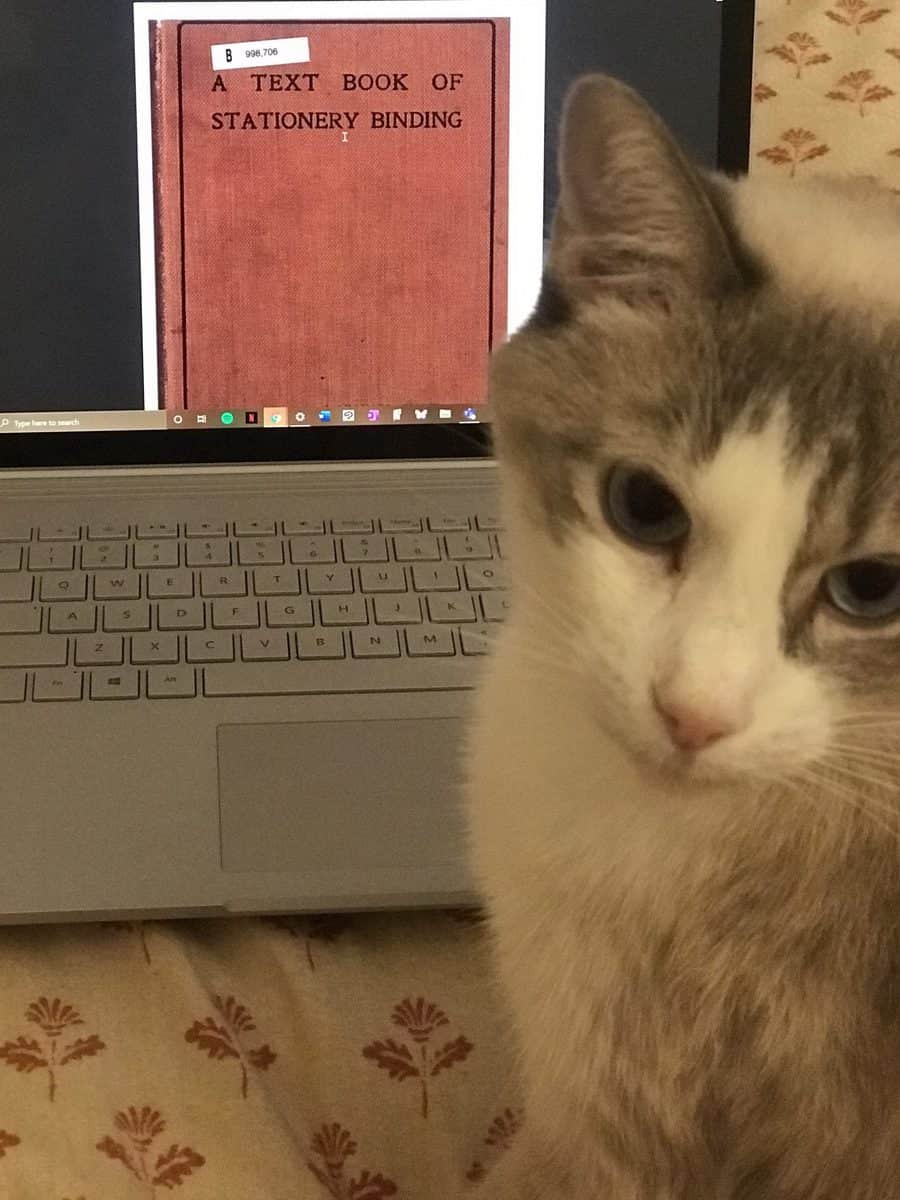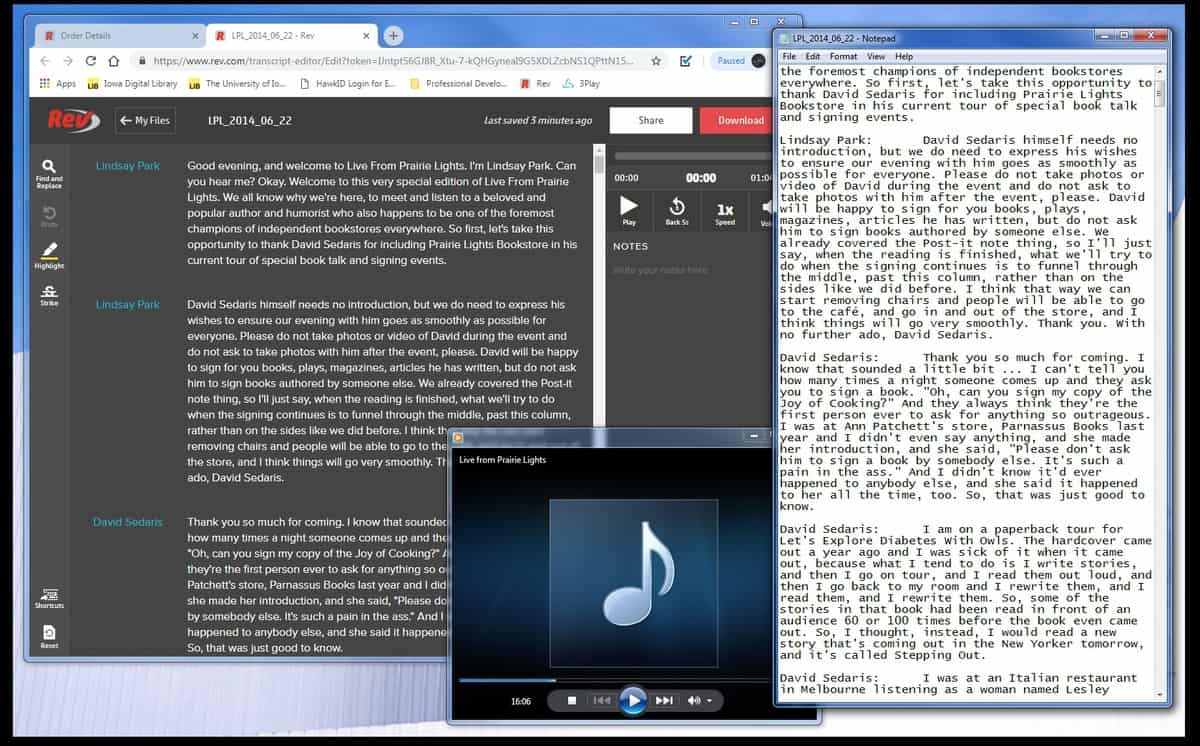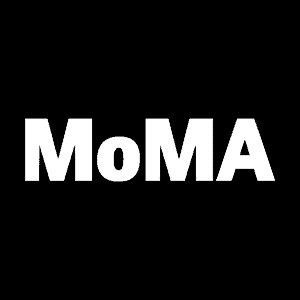As part time interim Preservation Processing Coordinator in the UI Libraries Preservation Department, one of my main duties is to supervise the student staff who do the day to day marking work for new acquisitions and items that need to be reprocessed for one reason or another. From January to early spring of this year,Continue reading “The Preservation Student Staff Remote Work Experience Spring/Summer 2020”
Category Archives: Digital preservation
Making A/V collections more accessible
Brad Ferrier, digital projects librarian, coordinates transcription and caption for Audio/Video (A/V) materials in the library’s collection. “Transcription is converting the speech in an audio file into a written plain text document. Caption is converting the speech in a video file into text which is synced and appears on-screen with the video,” Ferrier explains.
Preservation and Archiving Special Interest Group 2016
As a new librarian, I appreciate the privilege that my residency at the University of Iowa’s Preservation and Conservation department affords me; aside from the professional expectations of any other position, I’m encouraged to explore gaps in my LIS education and professional interests. However, there is never enough time to learn everything! Professional conferences areContinue reading “Preservation and Archiving Special Interest Group 2016”
Sustaining Digital Resources Boot Camp
Daniel Johnson, Digital Preservation Librarian, and I participated in the Sustaining Digital Resources Boot Camp at Northwestern University last week, August 8-10. The boot camp was billed as “the business model boot camp for digital project leaders” and we were not sure what to expect. In the weeks leading up the trip, we had severalContinue reading “Sustaining Digital Resources Boot Camp”
Van Allen Explorer Tapes in DPN
In May of this year, the University of Iowa Libraries became the first institution to deposit material into the Digital Preservation Network. You can read more about this on the DPN website or listen to an interview with about the process of adding this collection to DPN. As a member of DPN, the Libraries can deposit 5TB ofContinue reading “Van Allen Explorer Tapes in DPN”
Digitizing Hancher Posters
By Ben Bessman, Digitization Assistant Hancher Auditorium had been a noteworthy stop for world famous musical acts, theatre productions, dance companies, and guest speakers in the Midwest since 1972, until its original location was flooded out in June of 2008. Since then various community sites have served as hosts for the wide variety of performers thatContinue reading “Digitizing Hancher Posters”
Preservation & Conservation Welcomes New Equipment!
Earlier this month, Preservation & Conservation welcomed a new addition to our family: this lovely new digital image capture system from Digital Transitions! This equipment will be essential in undertaking one of our most ambitious projects yet, the digitization of the 150 scrapbooks in the Keith/Albee Collection. While our previous overhead scanner, the Zeutschel, has beenContinue reading “Preservation & Conservation Welcomes New Equipment!”
Preservation & Conservation Welcomes New Hires
Thursday, September 18, 2014 The UI Libraries Preservation & Conservation department would like to welcome two new(ish) staff members, Justin Baumgartner and Elizabeth Stone. They join us as members of the Keith/Albee project team. They will be working together, along with other UI Libraries staff, to stabilize and digitize the Keith/Albee collection. Both Justin andContinue reading “Preservation & Conservation Welcomes New Hires”
Preserving Media
Thursday, April 10, 2014 Submitted by Emily F Shaw In addition to millions of books, journals, and electronic resources, the University of Iowa Libraries is also the permanent home for film, audio, and video collections. Projecting an original 16mm film can be risky, and using playback equipment that is dirty or in disrepair can causeContinue reading “Preserving Media”
The Szathmary Digitzation Project
Tuesday, May 7, 2013 The University of Iowa’s Special Collections was fortunate to receive Chef Louis Szathmary’s library of cookbooks throughout the mid-80’s. Among the items were a number of handwritten cookbooks that Szathmary had collected over the years. In the Spring of 2012 conservation and digital preservation students began scanning the manuscripts. The firstContinue reading “The Szathmary Digitzation Project”


